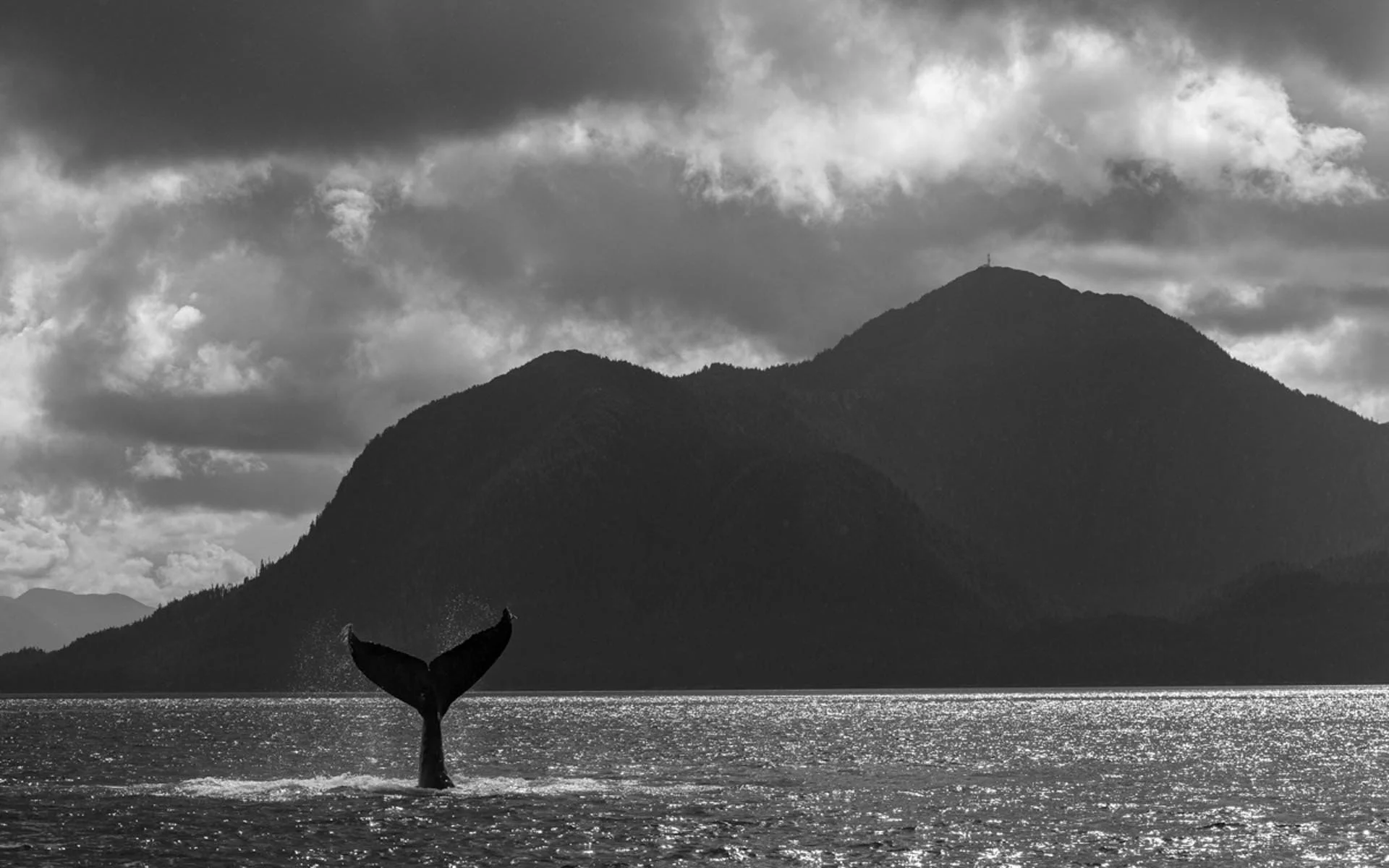A HUMPBACK WHALE SPECTACULAR
Besides my time in Baffin Island, I don’t think I’ve ever been to a more beautiful or evocative place than the Great Bear Rainforest which I visited back in September. Sailing around this vast eco system as we scouted for whales, wolves & bears was a wildlife experience at its purest.
High up on my wish list for this expedition was to see Spirit bears, a sub species of the Black Bear which is mainly found on three islands in British Columbia. In the end sightings of this rare bear eluded us, but that disappointment was more than made up by a series of encounters with humpback whales which were extraordinary.
Humpback Whales are frequently spotted in the waters and you can be easily identify these majestic giants by their distinctive back hump and impressive size: they reach lengths of up to 19 meters and a staggering weight of 36,000 kilograms.
With lifespans of 80 to 90 years, these whales embark on migrations of up to 8,000 kilometres between breeding and feeding grounds, consuming up to 300 pounds of food daily, mainly consisting of shrimps and small fish.
However, humpback whales in the Great Bear Rainforest region are not merely majestic spectacles – they play an important role in the Great Bear Rainforest ecosystem. They are apex predators, meaning that they are at the top of the food chain and have a significant impact on the region’s food web. Humpback whales feed on krill, small fish, and other marine life, which helps to keep populations of these species in balance.
The most memorable encounter led to this image below- one of my favorites from last year.
A Whale Finale
We came across a small group of humpbacks who started breeching, with one humpback breeching close to our boat at least 20 times. It was incredible behavior to witness. However, when the whale started slapping its pectoral fins backwards & forwards, which researchers think is one way they communicate with other whales, I had in mind an image I wanted to try and capture.
I got a more elevated position & switched to portrait mode and then underexposed by 3 stops as I wanted to isolate the white underside of the fin against the sea that was now close to black. This enabled me to create a black & white and abstract image of the humpback. It wasn’t easy with the timing but managed to get this image before the whale moved off.
In fact, when Mark Cawardine, one of the world’s leading whale experts describes this whale encounter as one of the best he’s experienced in over a decade, I appreciated that I had witnessed something very special. Bearing in mind this was also the first time I had ever seen Humpbacks I couldn’t believe my luck.
Humpback Whale spectacular
Whale breaching— a powerful leap from the water, followed by a thunderous splash— is a breathtaking display of strength and grace. We had one that must have breached the waters over thirty times, as well as tail slap its pectoral fins from side to side. It was one of the most incredible spectacles in the wild I’ve ever seen.
Researchers suspect that breaching, along with other loud surface behaviors like tail slapping and flipper slapping, are ways to communicate with other whales—underwater, the splash can be heard for miles.
Picture of Humpback Whale as it breaches in waters off Great Brear Rainforest
Whales Bubble netting
The most fascinating behaviour to watch though was their bubble net feeding which we were lucky enough not only to see this behaviour but also hear their communication by using a hydro phone. Bubble netting is an intelligent and cooperative hunting technique where the whales swim in tight circles while exhaling bubbles, creating a “net” that traps fish inside. This enclosed area form vertical curtains that appear as one or more rings from above.
Whales bubble netting
The vocalizations that we could hear underwater are used to coordinate and efficiently execute the bubble net, ensuring all whales can access the trapped fish. Whilst researchers don't fully understand them, they are likely part of the communication and group effort involved in this complex behavior.
Close up image of Humpback Whales bubble netting
If you are interested in knowing more about Humpback Whales these are great resources:
Read
Mark Cawardine has written a definitive Field Guide to Whales, Dophins & Porpoises
Watch
Secrets of the Whales trailer
More Facts











